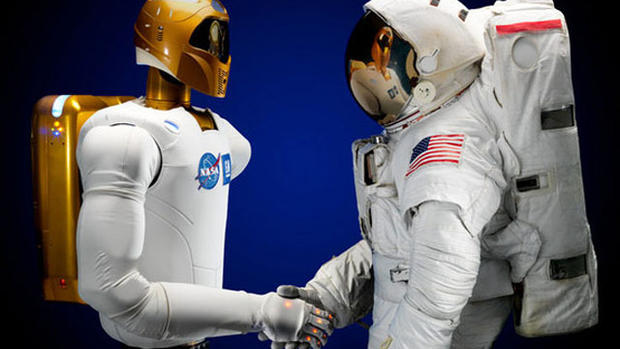NASA training robot to perform medical procedures in space
NASA is teaching a humanoid robot how to handle medical emergencies in space.
Robonaut 2, known as R2, is currently on board the International Space Station, where it has been assisting crews since 2011.
Having a robotic "physician" would take some pressure off of the astronauts. Currently, NASA astronauts are trained as basic surgeons before embarking on their space missions, which often last six months.
In a video released by NASA, an Earth-bound twin of R2 performed an ultrasound scan on a mannequin. It used a syringe to perform mock injections as part of the ultrasound.
"Humans at the controls are able to perform the task correctly and efficiently by using R2's dexterity to apply the appropriate level of force and can track their progress using R2's vision system," officials added in the video's YouTube description.
One of the key benefits is the speed at which the robots learn.
"I would say that within an hour I trained him more than with other students I'm working for a week, so I think that he's learning really fast," Garami says in the video.
"This demonstration of robotic capabilities could one day result in the ability for physicians to conduct complex medical procedures on humans in remote locations," the officials added, "whether on the Earth's surface or even in low Earth orbit."
In late December 2013, NASA introduced its latest humanoid robot. Officially known as R5, it is nicknamed Valkyrie and is expected to be used in missions to Mars. In 2008, the agency introduced a robot called Dextre (short for dexterous), designed to help with spacewalks.
R2 is currently made up of a torso and arms. NASA says it will get a set of high-tech legs, complete with seven joints each, sometime in 2014.
